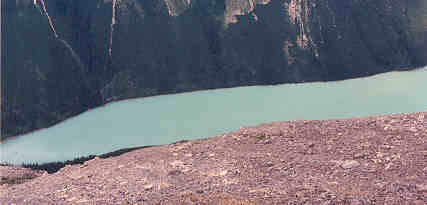Field, British Columbia
|
|
Field (Template:Coor dms) is a town of approximately 300 people located in the Kicking Horse River valley of southeastern British Columbia, Canada within the confines of Yoho National Park. Field was established during the building of the Canadian Pacific Railway as a locomotive depot for pusher engines required to help trains over the nearby Field Hill and Big Hill. The town was given its name by the CPR in December 1884 to honour American businessman Cyrus West Field, who was instrumental in establishing trans-atlantic telegraph service. Field is 27 km west of Lake Louise along the Trans-Canada Highway, the only access to Field. The visitor centre for Yoho NP is located in Field, and those wishing to visit the area surrounding Lake O'Hara can obtain a camping permit here.
Field_BC_entrance.jpg
Townsite of Field
Front Entrance to the Townsite of Field, British Columbia
There are many hiking opportunities near the town including:
- Burgess Pass - 6.6 km one way, provides views of Emerald Lake and the Wapta Icefields.
- Emerald Lake - 11 km from Field on a paved road. A 5 km lakeshore trail circles the entire lake.
- Sherbrooke Lake - 3.1 km one way
- Twin Falls - 9th highest waterfall in Canada
- Wapta Falls - a short 2.4 km round trip trail to the waterfall that produces the largest volume of water in Yoho NP.
Scrambling options include: Mount Burgess (2599m), Mount Field (2635m), Mount Stephen (3199m) and Paget Peak (2560m).
There are several points of interests nearby including:
- Takakkaw Falls - second highest waterfall in Canada
- Burgess shale - fossil beds (restricted access)
- Natural Bridge - Kicking Horse River has carved a natural bridge through solid rock.
- Spiral Tunnels Exhibit - railway tunnel carved through Cathedral Mountain.

